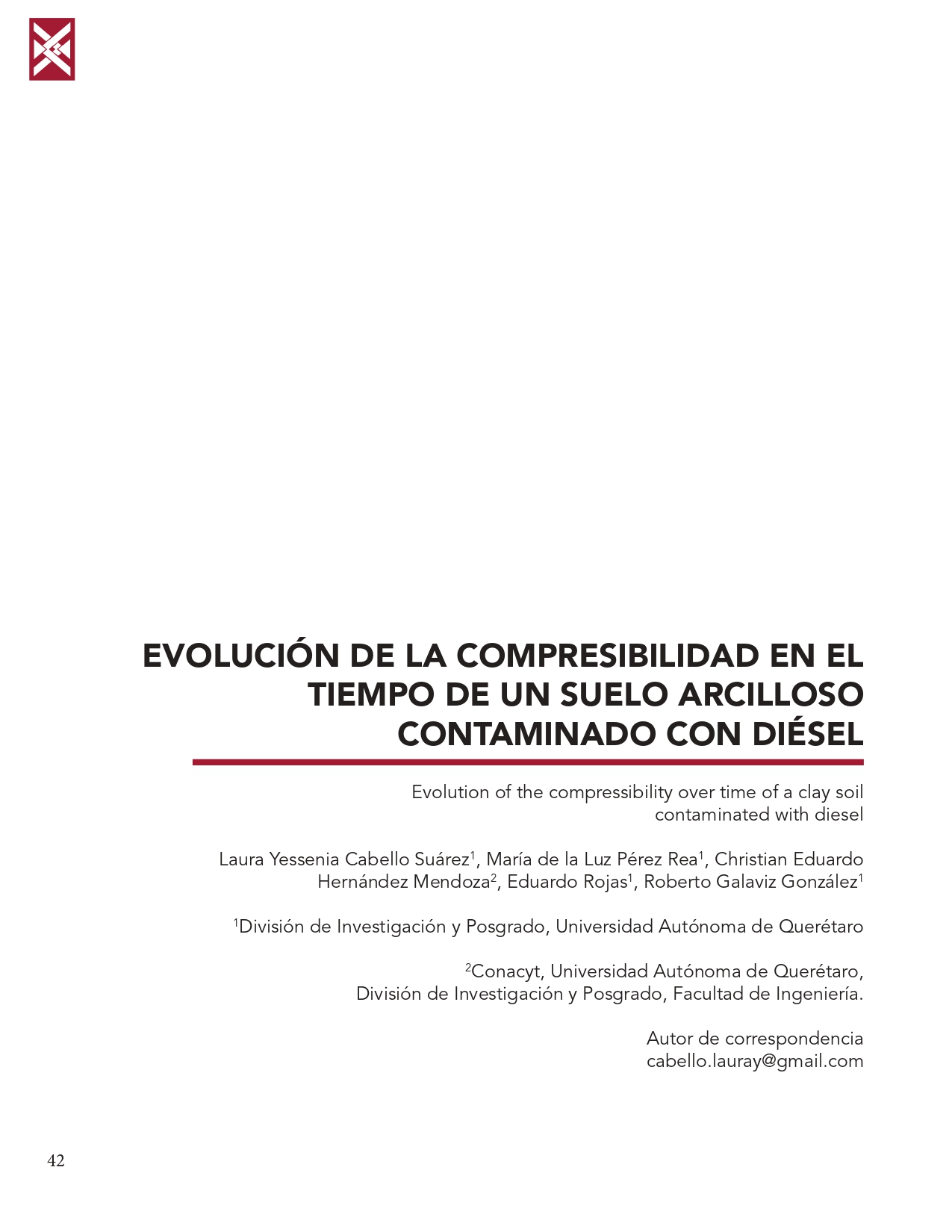Abstract
The problem of contaminated soils has been aggravated in recent years due to the large increase in accidental spills, leaks, and clandestine taps, which damage the environment. This phenomenon generates a change in physical, chemical, mechanical and biological properties of soils, as well as affections to groundwater. For example, in sandy and silty soils or a combination of them, the contaminant reaches easily the aquifer. Instead, in the case of clays, most of the contaminant remains trapped within the soil voids. In México, studies have been carried out on the modification of physical and mechanical properties due to the presence of some pollutants in fine soils. These pollutants cause changes in the engineering properties of soils such as compres sibility, strength, and permeability. However, this information cannot be generalized because each region has diversity in soil type. In this paper a comparative study in the compressibility of a clayey (CH) contaminated with diesel is performed. The compressibility at different aging times: null (zero), one, and three months after the soil was contaminated is presented. These values were obtained from oedometric tests. The content of diesel was established at 12.37% with respect to the dry mass of the soil. The results showed a 17% reduction in the coefficient of compressibility as the aging time progressed, causing the contaminated soil to be less compressive than the natural soil.
This work is licensed under a Creative Commons Attribution-NonCommercial 4.0 International License.

